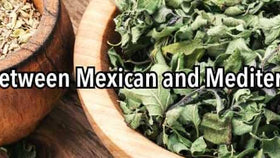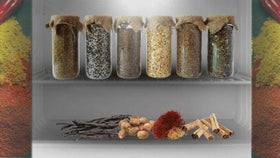Do you need to wash vanilla beans?
Demystifying Dried and Cured Vanilla Beans: Why Washing Isn't Necessary for Your Safety
We know you have seen it. Some sellers telling others to wash their vanilla beans or even the washing of vanilla beans themselves, but is it really needed? If your vanilla beans are properly dried and cured, it is not! In this short article, we explain why washing vanilla beans is un-needed and what you should do if a seller tells you to do this....
Unraveling the Truth: Safety and Dried Vanilla Beans
Dried and cured vanilla beans, with their captivating aroma and rich flavor, are prized ingredients in the culinary world. One common question that arises when handling these beans is whether washing is necessary. In this article, we will shed light on the topic, assuring you that washing dried and cured vanilla beans is not essential for safety purposes. Join us as we explore the fascinating characteristics of these beans and dispel any concerns related to mold, bacteria and other foreign matter.
The Curing Process: Nature's Defense Against Contamination
Dried and cured vanilla beans undergo a meticulous curing process after harvesting. This process involves natural fermentation and drying, creating an environment that inhibits the growth of mold and bacteria. The curing process is carefully designed to preserve the quality of the beans and prevent contamination. As a result, vanilla beans have inherited resilience against harmful microorganisms.
The Low Moisture Content and Vanillin: A Natural Shield and Vanillin the additional barrier
One of the factors that contributes to the safety of dried and cured vanilla beans is their low moisture content. During the curing process, the moisture level in the beans decreases significantly, making them inhospitable to mold and bacteria. Microorganisms require moisture to thrive, and the dry environment of vanilla beans acts as a natural barrier, reducing the risk of contamination. In the vanilla world, this is referred to as water activity and stability of vanilla beans. Proper controls in the slow drying of vanilla help stabilize the beans and therefore reduce the likelihood of mold or bacteria development. Vanillin also plays a factor in preventing and reducing mold development. According to NIH (National Library of Medicine) "vanillin exhibits strong antimicrobial properties besides its role as a flavoring agent." The use of vanillin as a preservative in the food world is being explored even outside of vanilla for sodas, fruit purees and more.
Quality Control Measures - application of modern food safety systems
Producers and suppliers of dried and cured vanilla beans adhere to strict quality control measures to ensure their safety and integrity. These measures include proper handling, storage, and packaging techniques that maintain the beans' quality throughout their journey from farm to market. By following these practices, the industry ensures that consumers can enjoy dried and cured vanilla beans without concerns about contamination. Any reputable supplier of vanilla and any other food product operates in accordance within the FMSA (food safety modernization act) standards, using good manufacturing practices (GMP) and is definitely not packaging vanilla beans from their home or using non sterile tools and equipment in their processes.
Best Practices for Handling Vanilla Beans
While washing dried and cured vanilla beans is unnecessary for safety reasons, it is essential to handle them properly to maintain their quality. Below you find three ways to ensure the quality of your vanilla beans now and into the future.
1. Visual Inspection - Always inspect your vanilla beans upon receiving them. If your vanilla is received in a sealed package there is no need to open the package, but you should visually inspect for any sign of mold growth on the tips and bottom of the vanilla pod as well as around any tattoo of the vanilla bean. Generally speaking, these areas are the weakest areas of the pod and most prone to mold. To assist in this process at Slofoodgroup, we choose to package our gourmet vanilla beans in four millimeter food grade barrier film pouches that are see through. This allows our customers to see the all of the beans that they have purchased without opening the package before their intended use.
Once opened and before using a vanilla bean, visually inspect it for any signs of visible mold or damage. Quality beans should have a plump appearance and a supple texture. If you notice any abnormalities, such as mold growth or unpleasant odors, it is best to discard the bean and choose a fresh one.
2. Proper Storage - maintaining the quality of your vanilla beans with proper storage
To safeguard the quality of your vanilla beans, store them in a cool, dark place in an airtight container. Protect them from excessive heat, moisture, and direct sunlight, as these factors can compromise their flavor and increase the risk of mold growth. This is possibly the most difficult aspect of having vanilla beans because naturally, over time, vanilla beans will lose moisture, become less pliable, and even begin to mold slightly if the vanilla does not get aired out once in a while. We recommend users check their vanilla beans once every several weeks to ensure the quality while storing. Never, ever store your vanilla beans in a cooler or fridge. Excessive moisture in the air can and will cause vanilla beans to develop mold.
3. Trustworthy Sources - Always buy your vanilla beans from a trustworthy source
Ensure that you purchase dried and cured vanilla beans from reputable suppliers who prioritize quality and safety. By choosing trusted sources, you can have confidence in the quality control measures implemented throughout the bean's journey.
When it comes to dried and cured vanilla beans, there's no need to wash them for safety reasons. The careful curing process, combined with low moisture content and industry quality control measures, ensures that these beans are resilient against mold and bacteria. By adhering to proper handling and storage practices, you can enjoy the exceptional flavor and aroma of dried and cured vanilla beans without compromising safety. Embrace these culinary treasures with confidence, knowing that they have undergone processes that prioritize your well-being. Elevate your recipes and let the essence of vanilla beans shine through as you create culinary delights that captivate your senses.
endnote about vanilla beans, mold, bacteria and foreign matter:
Now we are not saying mold, bacteria and some foreign cannot occur as it can and it is quite normal to some extent. What we are saying though is you do not need to wash your vanilla beans upon receiving for safety purposes or is it ever recommend you purchase vanilla beans from suppliers who are washing beans for you.
Doing so not only exposes your vanilla to more risk, it also inadvertently rinses away and removes a lot of the flavor and aroma that it took months to develop during the curing and conditioning of vanilla beans. Mold happens even with the most expertly prepared vanilla beans at times. A wool fiber from sweating and warming blankets sometimes sticks to the pods and ends up in packaging but the wool has been sterilized before use.
Monitoring your vanilla beans during storage and removing any damaged bean in the early stage can help you prevent loss of any remaining vanilla beans. If the damage is very small, simply snip away any affected area using scissors and add the remainder of the pod into your vanilla extract then continue to monitor your vanilla beans. The best defense to ensure the shelf life of your vanilla beans is staring with quality and monitoring your vanilla beans during their life span in your own kitchen.







Slofoodgroup
Author